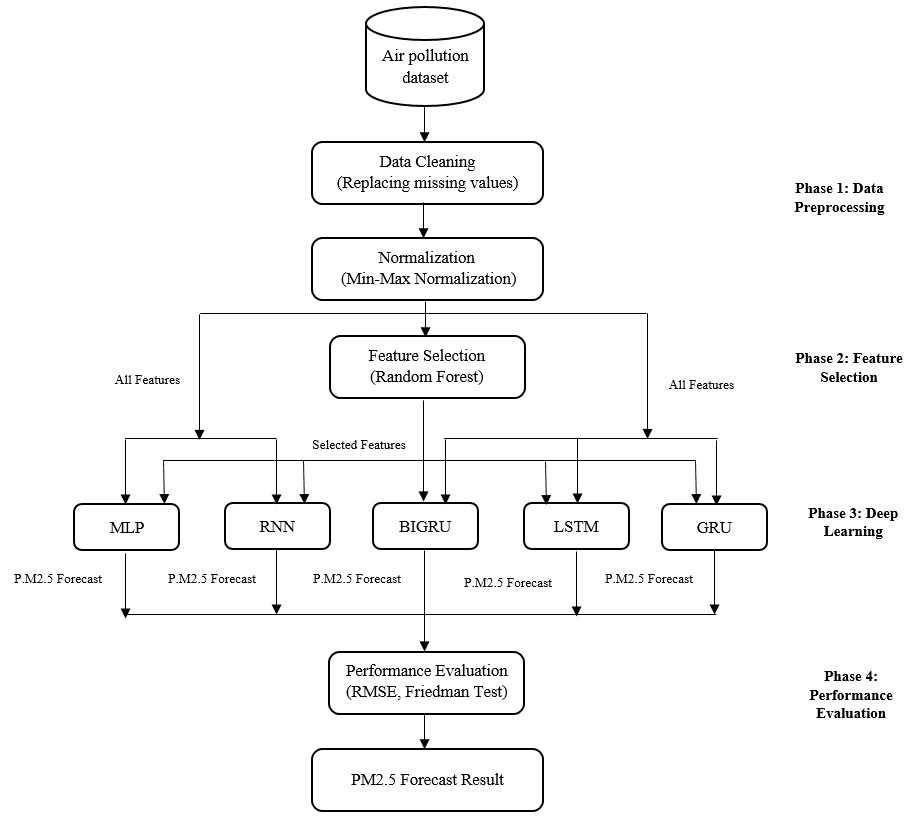
In recent years, air pollution has increased with industrialization and urbanization globally. It is an important hazardous factor that causes severe health issues to community’s health. Among the number of pollutants in air, PM2.5 is very dangerous due to its very small, 2.5µm, diameter. The PM2.5 concentration in air causes severe life-threatening to humans. In this paper, RFBIGRU model is proposed to predict PM2.5 in the atmospheric air. RFBIGRU improves PM2.5 prediction accuracy using Random Forest (RF) feature selector and Bidirectional Gated Recurrent Unit (BIGRU) deep neural network. The PM2.5 concentration in air depends on other pollutants' concentration in the air. However, the consideration of several other pollutants increases the curse of dimensionality and overfitting issues. So, in RFBIGRU, first, the relevant pollutants to PM2.5 are identified using random forest feature importance. Then the nonlinear and temporal patterns of the time series air pollutant data are extracted both in forward and backward direction using Bidirectional GRU. The RFBIGRU reduces the curse of dimensionality, overfitting and improves the PM2.5 prediction accuracy compared to other deep learning methods. The experimental result proves RFBIGRU outperforms others by producing least Root Mean Square Error of 42.217 and 6.813 for Delhi and Amaravathi regions.
Total file downloads: 18